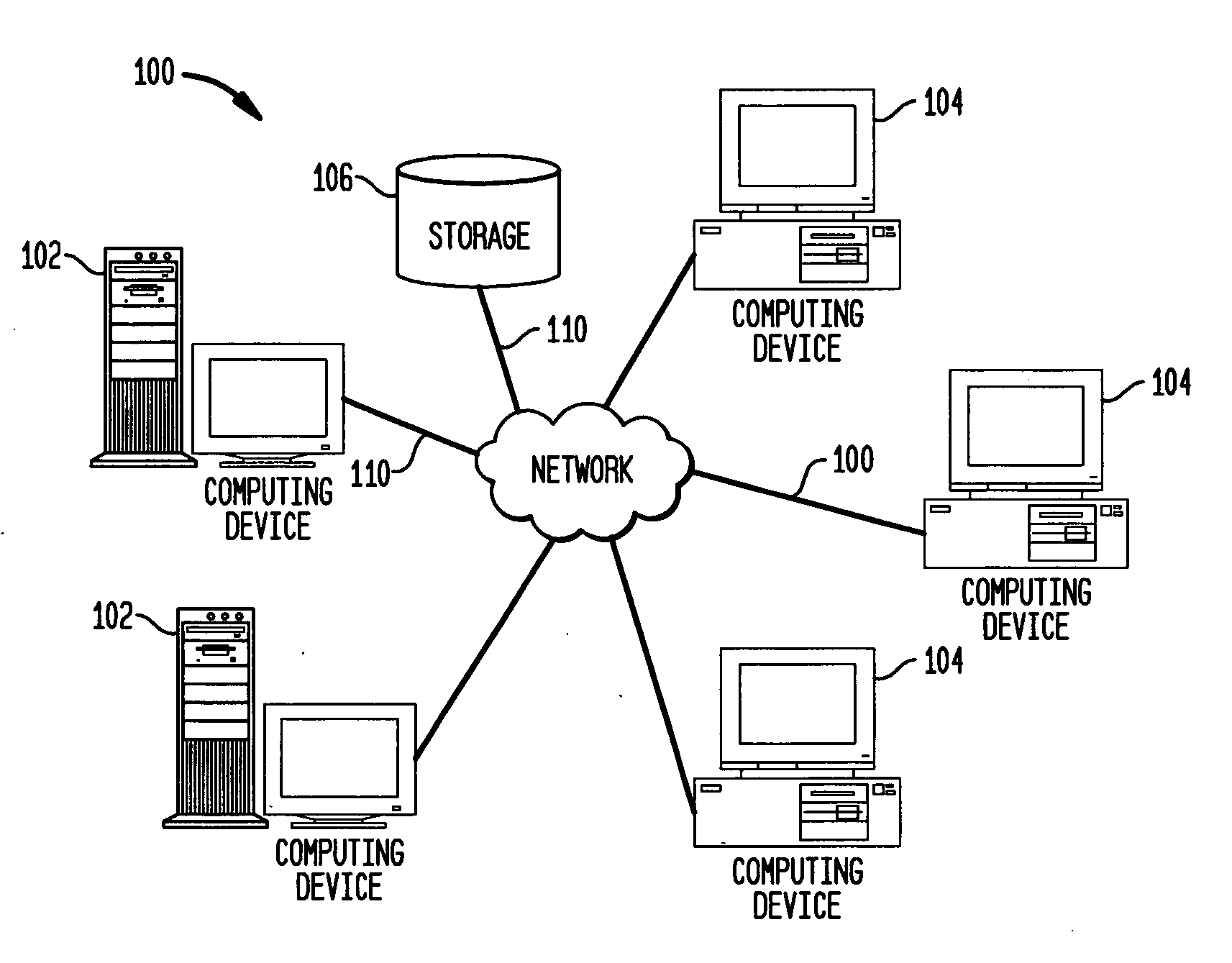Method and system for clock skew and offset estimation
a clock skew and offset estimation technology, applied in multiplex communication, instruments, generating/distributing signals, etc., can solve the problems of changing timing difference between clocks, two clocks often not in perfect synchronization, and time difference between clocks
- Summary
- Abstract
- Description
- Claims
- Application Information
AI Technical Summary
Benefits of technology
Problems solved by technology
Method used
Image
Examples
Embodiment Construction
[0019]FIG. 1 illustrates a computer network 100, including servers 102, clients 104 and data storage unit 106. Network 100 also includes data connections 110 for transmitting data between the devices of the network. Network 100 may be, for example, the Internet, but could also be an intranet, a local area network, a wide area network, point-to-point links, or other networks.
[0020] Any suitable servers 102 may be used in the network 100. Also, the clients 104 of network 100 may be, for example, personal computers, laptop computers, servers, workstations, main frame computers, or other devices capable of communicating over the network. Similarly, connectors 110 may comprise a wide range of suitable devices, such as wire, fiber optics or wireless communication links.
[0021] As mentioned above, various computer timing protocols, including the Server Timing Protocol (STP), require information about the skew and offset between two clocks in computer systems or networks, such as network 1...
PUM
 Login to View More
Login to View More Abstract
Description
Claims
Application Information
 Login to View More
Login to View More - R&D
- Intellectual Property
- Life Sciences
- Materials
- Tech Scout
- Unparalleled Data Quality
- Higher Quality Content
- 60% Fewer Hallucinations
Browse by: Latest US Patents, China's latest patents, Technical Efficacy Thesaurus, Application Domain, Technology Topic, Popular Technical Reports.
© 2025 PatSnap. All rights reserved.Legal|Privacy policy|Modern Slavery Act Transparency Statement|Sitemap|About US| Contact US: help@patsnap.com



